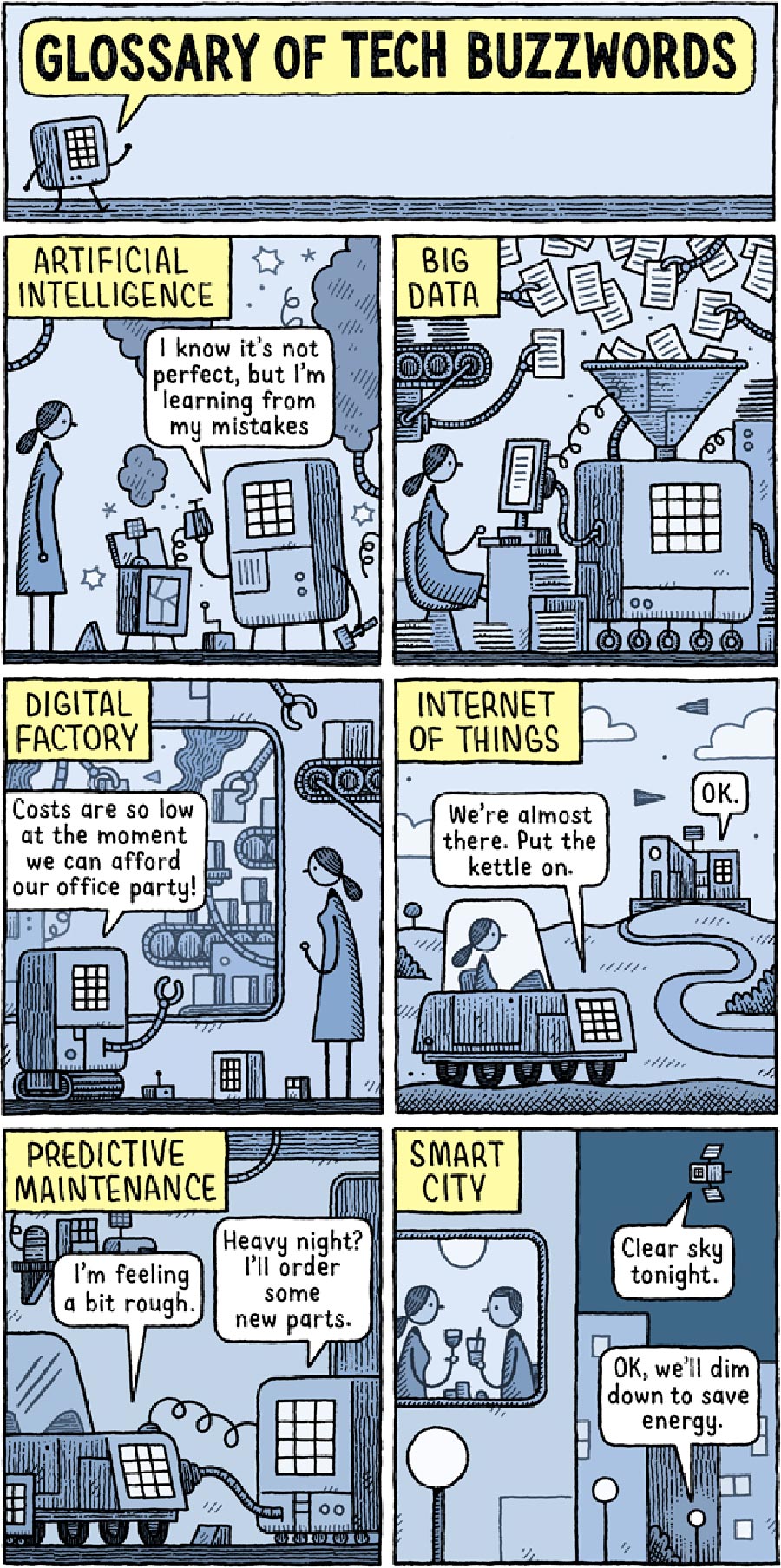Big Data, Internet of Things, Artificial Intelligence… there are lots of buzzwords thrown about when talking about technology, but what do they actually mean?
But research suggests that most people don’t feel confident about what these terms actually mean.
Less than a quarter of respondents say they could explain ‘Internet of Things’, while only 7.5% understand what is meant by ‘Big Data’. To help clear this up, we’ve created a guide to bust the buzzwords…

Internet of Things
Describes the way many different items and objects can be connected to each other via the internet. For example, your car could use the internet to communicate with your house to prepare for your return home, turning the heating on or even having a cup of tea ready!
Big Data
Just what it says – large amounts of data. Thanks to the internet, it has become possible to collect and analyse this data to uncover underlying patterns and trends and make predictions for the future based on these. It can be used for amazing things, from tracking the spread of Cholera following the Haiti earthquake using data from Twitter, to making predictions about potential crime hotspots.
Smart City
A city that has infrastructure, buildings and even people that are digitally connected to communicate with each other. This enables it to adapt and respond to make our lives easier – for example, traffic lights which adjust their timing to help prevent traffic jams and trains which run more often when more people gather on platforms.
Artificial Intelligence
What used to be called machine learning, where computer systems attempt to replicate human intelligence. There are three levels to AI: Narrow intelligence – machines can learn specific tasks, such as learning to play games like Chess or Go so they can beat a human player. Human equivalent intelligence – machines can interact on the same level as people, such as a human companion robot. And superhuman intelligence – machines exceed our own mental capabilities.
Digital Factory
Using technology and the internet to manage the manufacturing process. All factory assets, such as raw materials, trucks for transport, factory machines, human workers and suppliers, are converted into digital data, which then processes what is needed, when and where to improve efficiency and reduce costs.
Predictive Maintenance
Using sensors connected through the internet to monitor the condition of machine parts in real-time. When parts (e.g. brakes on a train) wear down to a certain point, they can be replaced at the most convenient time, before they fail completely. By connecting these sensors, entire networks of machines can be monitored, meaning that the machines (e.g. a fleet of trains) never break down.